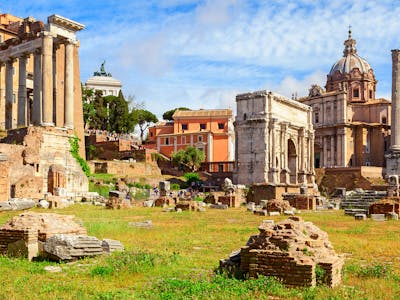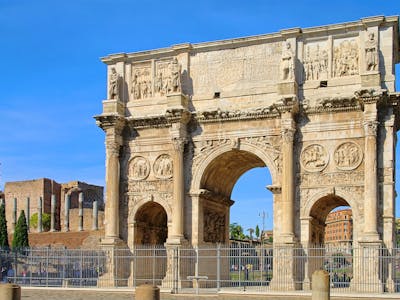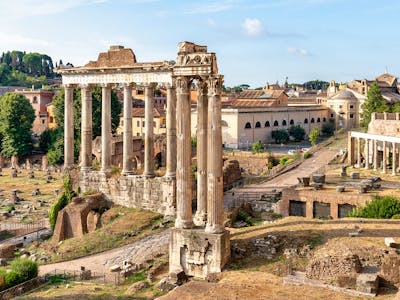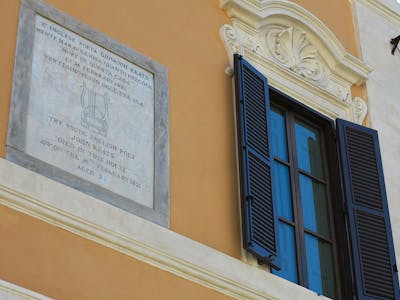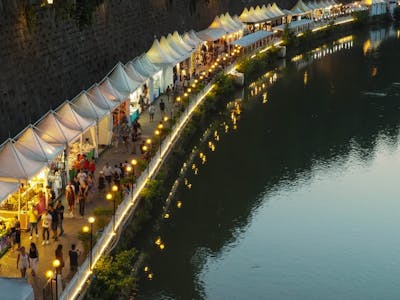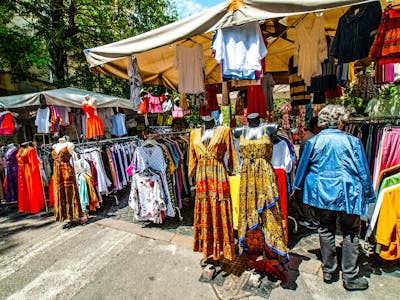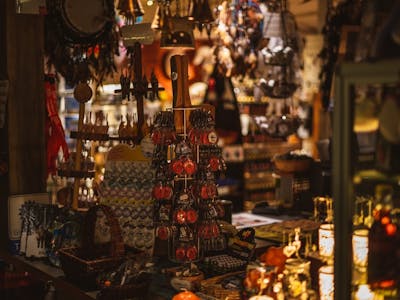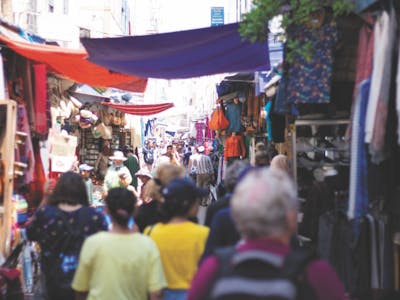Located in Southern Europe, Rome is Italy's capital city and attracts over 7.6 million tourists annually. Among the many attractions like the Pantheon, Roman Forum, Trevi Fountain, and Vatican City, the Colosseum stands out as a must-visit historic site.
The Colosseum, Rome
The Colosseum, a lasting symbol of the Roman Empire, is an elliptical structure measuring 620 by 513 feet. It was built on the site of a drained artificial lake to mark the end of a tyrannical rule. The Colosseum could hold 60,000 seated spectators and 10,000 standing guests, often hosting around 70,000 people at a time.
Check out the video below to see what Sara, our expert from Headout, has to show you.
The Colosseum - Handy information
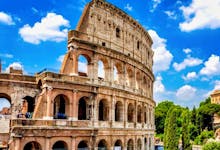
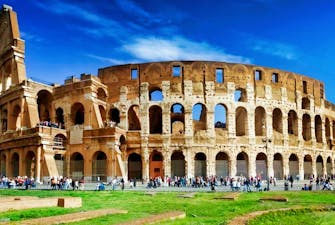

Handy information
| 📍 Best Entrance: | Sperone Valadier |
| ⏰ Suggested Duration: | 3 hours |
| ☀️ Best Time to Visit: | 9 am |
| 💜 Must See: | Colosseum by Night |
| 🎟️ Colosseum Ticket: | €24.90 |
| 😍 Colosseum Underground Tour: | €150 |
| 🎫 Colosseum + Vatican Museum: | €80.90 |
Must-see at Colosseum
Columns and arches
Flavian Amphitheatre Plaque
The Hypogeum
Arena
Things To Know
Number of visitors per year: 6 million
Founded in: 70 AD
Builder: Vespasian, Titus
Architectural style: Ancient Roman architecture
Opening Hours And Address
Jan 2 - Feb 28: 9am - 4:30pm
Mar 1 - Mar 26: 9am - 5:30pm
Mar 27 - Aug 31: 9am - 7:15pm
Sept 1 - Sept 30: 9am - 7pm
Oct 1 - Oct 30: 9am - 6:30pm
Oct 30 - Dec 31: 9am - 4:30pm
Piazza del Colosseo, 1,
00184 Roma RM, Italy
Get Directions
Why visit the Colosseum?
The Colosseum is one of the world's most visited monuments, attracting 4 million visitors each year. This engineering marvel holds many records.
Unlike most amphitheaters of its time, which were circular, the Colosseum's elliptical shape gave spectators a better view of the action. It could hold 80,000 spectators and was constructed without modern machinery. The grand structure featured 80 ornate entrances, along with numerous doorways, tunnels, staircases, and corridors. Make sure to include the Colosseum in your itinerary to walk the same path as the gladiators and experience this ancient site!
Consider taking a Guided Tour to explore all the different aspects of this historic monument.
Top recommended Colosseum tickets
Colosseum history
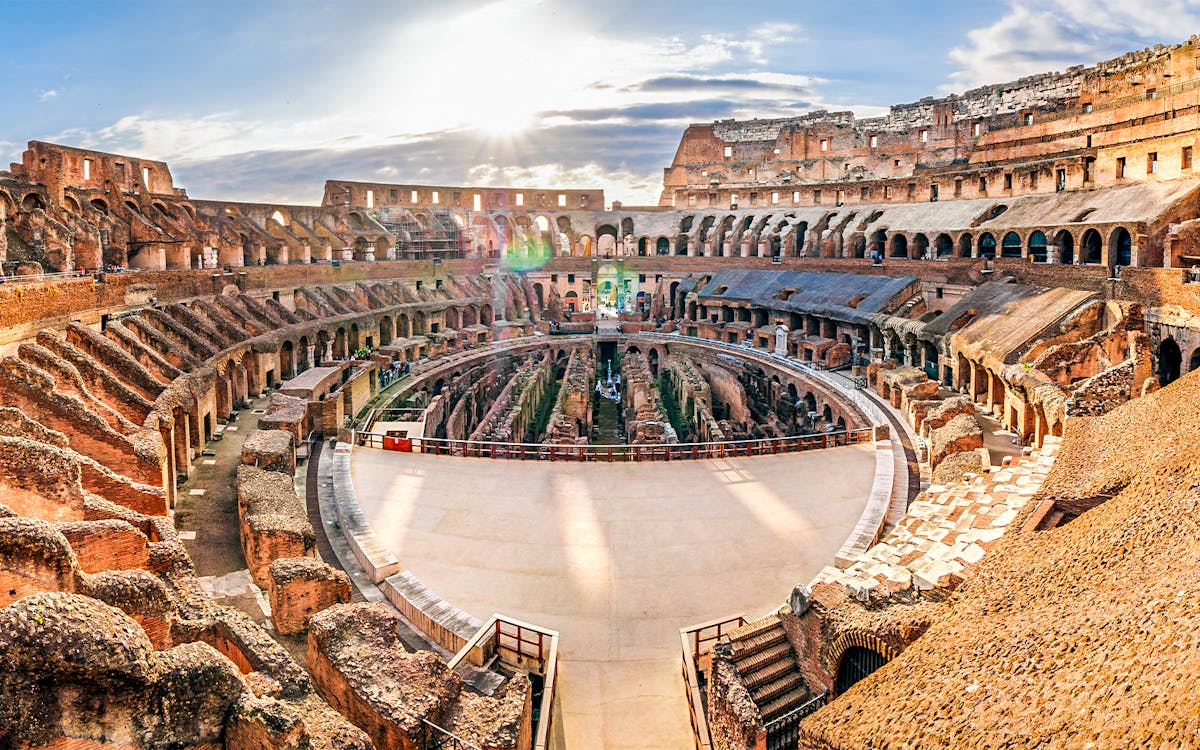
Did you know that Rome's Colosseum was a gift to the Roman people from Emperor Vespasian of the Flavian dynasty? Construction began around AD 70-72 and took over a century to complete. Vespasian's son, Titus, inaugurated it in AD 80. Known as the Flavian Amphitheatre, its grand opening featured a hundred days of entertainment, including gladiatorial games and wild animal fights. The Colosseum also hosted dramas, mock fights, and public executions.
Over time, the Colosseum served various purposes, including as a church, fortress, and quarry. While it was actively used during the peak of the Roman Empire, it fell into disrepair by the 20th century due to earthquakes, lightning, vandalism, and neglect, with nearly two-thirds of the structure destroyed. Thanks to restoration work that began in the 1990s, the Colosseum is now ancient Rome’s most renowned heritage site, attracting millions of tourists from around the world.
What did the Colosseum look like?
It's fascinating that despite being damaged by earthquakes in 847 and 1231, the Colosseum has endured, showcasing the engineering brilliance of ancient Rome. Its elliptical shape provided a vast stage for gladiator combats, thrilling thousands of spectators. The structure featured Doric, Ionic, and Corinthian columns, combining beauty and strength. The Colosseum originally had a grand retractable awning, called the velarium, which protected spectators from the sun. With a capacity of over 50,000 people, it allowed crowds to enter through its 76 archways to enjoy the spectacles. Remarkably, the Colosseum remained a premier entertainment venue for over seven centuries.
Colosseum architecture & design
Measuring 189 meters long, 156 meters wide, and 50 meters high, with a total surface area of almost 6 acres, the Colosseum holds the Guinness World Record for the largest amphitheater in the world. Made primarily from travertine stone and concrete, this four-story structure was one of the most complex man-made constructions of its time. Its columns and arches, adorned with statues of gods and emperors, are standout features.
The Colosseum's outer facade, equivalent to a 12-story building, showcases different styles of columns and arches. The fourth level features small windows instead of arches and columns. While most of the structure was mainly white, the Colosseum Arena was constructed using red and black stone blocks. The arena’s wooden floor was covered with sand to prevent slipping and to simplify post-fight cleanup.
The Colosseum's arena had lifts, special machinery, and trap doors for releasing animals. A special structure, the Hegmata, was used to lift heavy animals from the hypogeum (an underground network of tunnels and chambers) onto the arena floor. Combatants entered through the Gate of Life, while the Gate of Death was used for the exit of the victorious and the fallen gladiators. The recently opened underground and Belvedere (top level) areas offer a unique glimpse into the past for tourists.
The arena also had lifts, special machinery and trap doors to release animals into the action floor. A special structure, called the Hegmata, was used to lift heavy animals from the hypogeum (an underground network of tunnels and chambers) onto the arena. Combatants entered the arena through a Gate of Life whereas the Gate of Death was used for the exit of the victorious and gladiators killed during the fight! While the Underground and the Belvedere (the top level) were not accessible to the public for the longest time, don’t miss out on travelling back in time as these exclusive areas have recently opened to tourists.
The Colosseum’s columns vary by level: the first story features Tuscan columns, the second story has Ionian columns, and the third story boasts intricate Corinthian columns. The fourth floor is decorated with rectangular columns and small windows. The arena had 36 trap doors for dramatic entries and special effects during performances.
The hypogeum, a two-level underground network of corridors and cells, housed animals and gladiators before their entry into the arena. The Colosseum also had hundreds of fountains for spectators and 80 entrances to manage the flow of the crowds. Additionally, a velarium was used to protect spectators from the sun and rain.
Colosseum entrances
The Colosseum has three entrances: one for individual visitors, one for groups, and one for the arena. The entrance for individual visitors, called Sperone Valadier, is the only one currently in use and faces the forums. The arena entrance, named Stern, is used exclusively for guided tours that include a visit to the arena. However, entry through the Varco Stern entrance is currently suspended.
Colosseum at night
The Colosseum at night is a magnificent sight. It has endured centuries of culture and war, remaining as significant as the day it was built. Seeing its glory at night offers a new perspective, and nearby night markets and food streets add to the experience. A nighttime visit to the Colosseum is enticing, as it provides a more personalized experience with minimal crowds and pleasant weather. Enjoy the majestic shadows of this structure while taking in the view of Rome at night.
What to see at the Colosseum
1Columns and Arches
Each archway in the Colosseum is numbered, helping spectators find their seats. There are 76 public entrance archways. The remaining four were reserved for important individuals, such as emperors, senators, and visiting dignitaries.
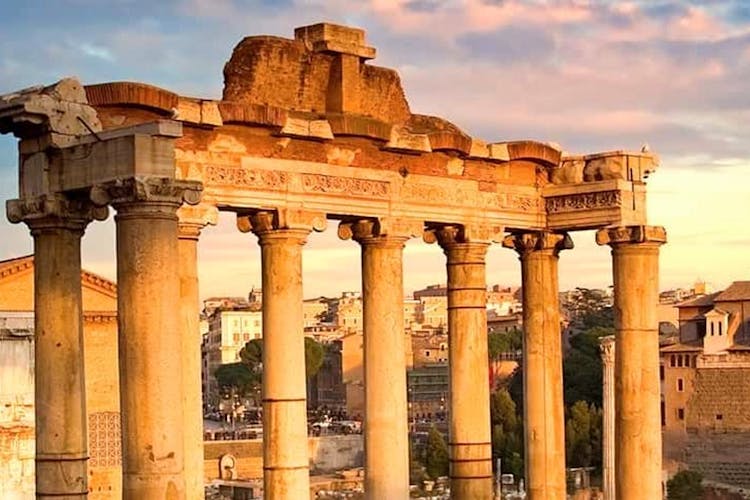
2Flavian Amphitheatre Plaque
A plaque on the Colosseum's facade displays its name, the Amphitheatre Flavium, indicating its construction by the Flavian dynasty. This plaque is located on the wall facing the Temple of Venus.
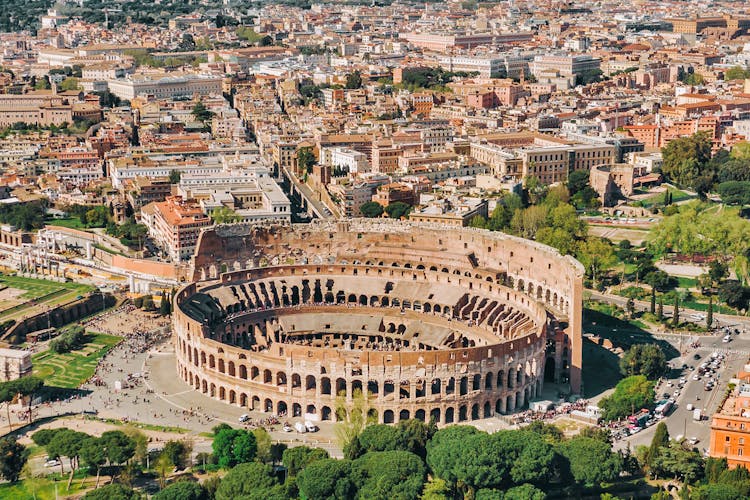
3The Cross
Inside the Colosseum, a large wooden cross was erected by Pope John Paul II in 2000 to commemorate all the Christian martyrs.
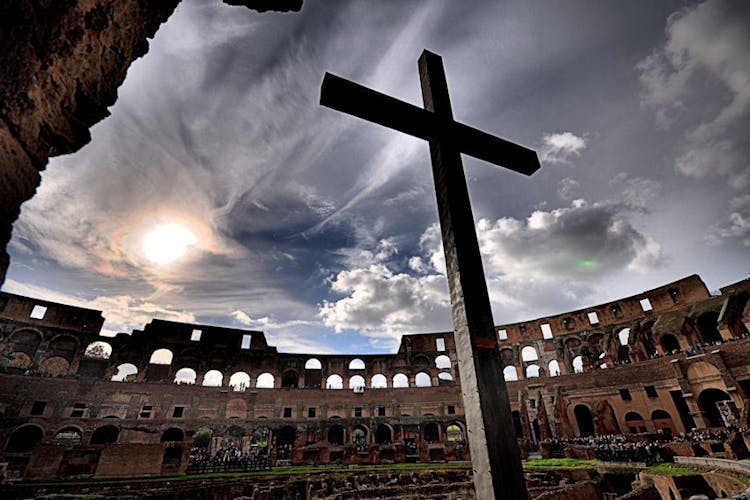
4The Entry and Exit Gates
The archway between 57 and 58 is known as the Gate of Death or the Libitinarian Gate, used to remove the dead and defeated from the arena. The archway between 19 and 20 is called the Gate of Life, through which gladiators entered the Colosseum.
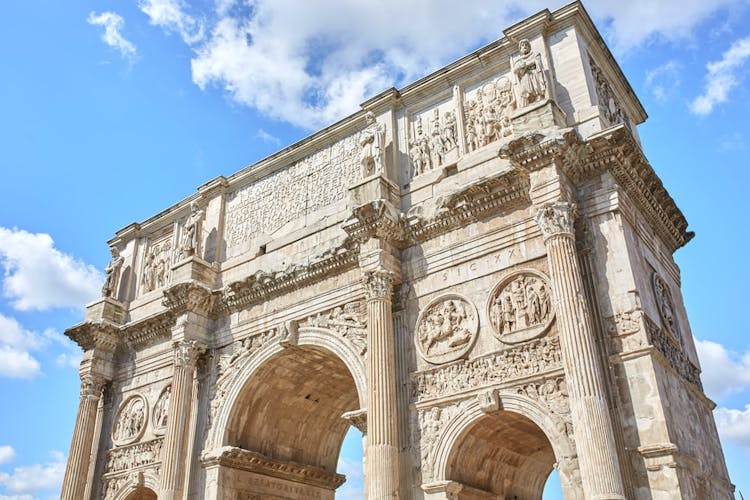
5Arena
The Colosseum arena was originally covered with wooden panels and sand. Although most of the flooring is now lost, a portion is still visible. This arena was the main stage for gladiator and animal fights. Don’t miss the chance to experience the atmosphere of this historic battleground!
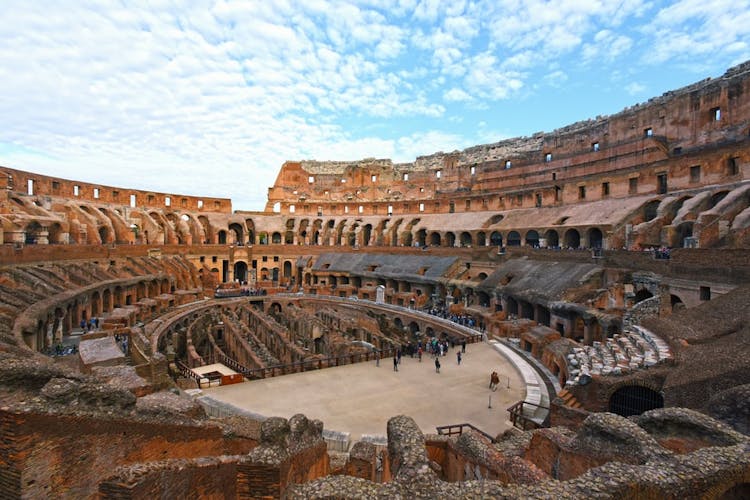
6The Hypogeum
Although the arena floor panels are missing, you can still see the walls of the hypogeum. This labyrinth of service corridors and cages reveals where animals and gladiators were kept before their fights. The hypogeum also had 36 trap doors for special effects during performances. To experience the hypogeum, ensure your ticket includes access to this part of the Colosseum.
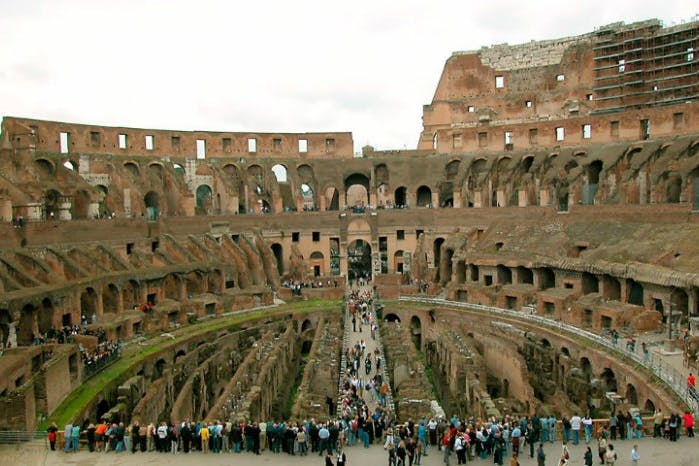
7Permanent Exhibition
Archaeologists have excavated many artifacts around the Colosseum. These artifacts, including cups and spoons used by vendors to serve spectators, are displayed on the second level. Excavated oyster shells and nutshells suggest that Romans enjoyed eating fruits.
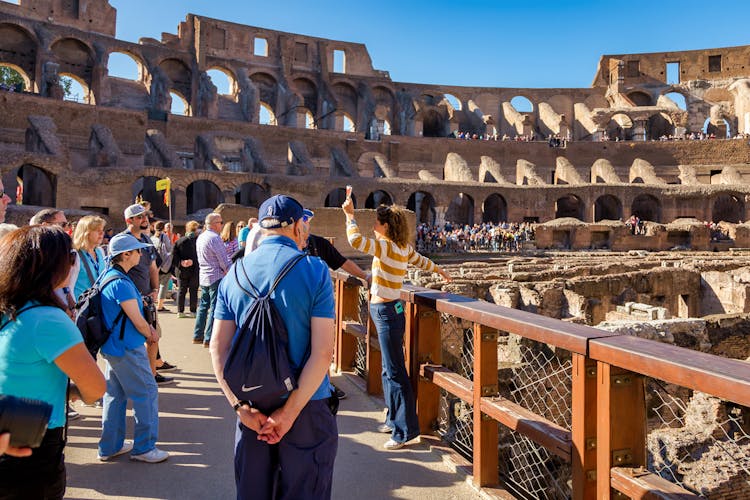
Colosseum Rome passes
Best City Passes that include access to the Colosseum
Roma Pass
The Roma Pass is a special tourist-cultural card that allows access to museums and archaeological sites, including the Colosseum, Roman Forum, and Palatine Hill. It also includes free use of the city’s public transport network for the duration of the pass. You can purchase the Roma Pass for either two or three days, depending on the length of your stay. If you choose this pass, be sure to make a reservation for the Colosseum.
Omnia Card
Opt for an Omnia Card if you want to include Vatican City in your Roman holiday. The Omnia Card includes the Roma Pass, which is valid for 72 hours and allows you to explore both Vatican City and Rome with one pass.
Getting there
There are several public transport options to reach the Colosseum:
By metro
- Closest metro station: Colosseo
- Line: B
- Travel time from Roma Termini: 5 minutes
- Walking time from station to entrance: Less than 5 minutes
By bus
- Routes: 75, 81, 673, 175, 204
- Travel time from Roma Termini: 15-20 minutes (depending on route and traffic)
- Bus timings: 5:30am to 12am; night buses operate from 12am to 5:30am
By tram
- Line: 3
On foot
- Walking time from Roma Termini: 30 minutes
- Suitable for: Those with time and who enjoy a leisurely strol
Best time to visit the Colosseum
The Colosseum sees the highest number of visitors from April to September. If you prefer smaller crowds, plan your visit between November and March, when the weather is pleasant.
For a quieter experience, visit the Colosseum on weekdays, especially during opening hours. An entry slot towards the end of the day allows you to see the Colosseum and Rome beautifully lit up, adding a magical, ancient feel.
For more information, you can read about the best time to visit Rome
Colosseum facts you probably didn’t know
- Velarium: The Colosseum had a cloth roof called the Velarium, which acted as a sun shield on sunny days and offered protection from rain.
- Multi-use structure: The Colosseum was also used as a church, fortress, and quarry by Roman families.
- Construction: It took ten thousand slaves over ten years to build the Colosseum.
- Size: The arena of the Colosseum is so large that it could fit a modern-day football pitch.
- Popularity tactic: Emperors used the Colosseum to gain popularity by funding major events, often paying themselves and making entry free. They sometimes served free food to win the support of the Romans.
- Gladiators: Most gladiators were men, though there were some female gladiators. These combatants were usually slaves, criminals, or prisoners of war.
- Special effects: The arena had 36 trap doors to add special effects during performances. The underground labyrinth was used to hold wild animals and gladiators before fights.
- Mock sea battles: At times, the arena floor was flooded with water to stage mock sea battles.
- Currency: The Colosseum is featured on Italy’s five-cent euro coin.
Read more Colosseum facts here!
Insider tips for visiting the Colosseum
- Skip the long queues: The over-the-counter ticket lines at the Colosseum can have long waits, sometimes over 2 hours. Avoid wasting time by booking your tickets online. This way, you can skip the long queues and head straight in for a tour.
- Book in advance: Colosseum tickets sell out quickly, especially during peak tourist periods. It's recommended to book your tickets in advance to secure your preferred time slot. Online tickets offer a fast-track pass, saving you time.
- Choose the right ticket: The Colosseum has different areas to explore. Choose a ticket based on your interests to make informed decisions. Since the Colosseum is large and involves a lot of walking, eat a heavy meal before starting your tour.
- Wear comfortable shoes: The walking areas at the Colosseum are not all smooth. For safety, avoid flip-flops and heels. Wear comfortable shoes with good grip.
- Optimal visit time: Arriving before 8:30 am allows you to bypass large crowds and enjoy the fresh morning air.
- Arrive early: Show up at least 15-20 minutes before your time slot to allow time for mandatory security checks. This buffer time ensures a smooth start to your visit.
Top things to do around the Colosseum in Rome
The Colosseum is surrounded by prominent landmarks of the Roman empire. Here we list out the top things to do around the Colosseum:
Restaurants around the Colosseum
The Colossuem is ancient and offers many things to explore in and around. Make sure you don't walk in an empty stomach. Hence, here are a list of the top food joints and eateries for a hearty Italian meal.

An ancient winery, the place serves Italian cuisine and is vegetarian friendly, has vegan options, and gluten free options. Since this is one of the top rated places near the Colosseum, make sure to reserve a table beforehand!
Address: Via Panisperna 251 Rione Monti, 00184 Rome Italy

A 6 minute walk from the Colosseum, deport yourself to an old tavern of the past by visiting Trattoria Luzzi. The place offers some local experience, the best recipes of the Roman tradition, and some great food at affordable prices. You can check the menu here.
Address: Via Celimontana, 1, 00184 Roma RM, Italy

AA family-operated trattoria, this restaurant in the Monti neighbourhood is often populated with a lot of tourists! If celebrities like Al Pacino, Dustin Hoffman, and Bruce Springsteen have all dined here, this is another reason to visit the tavern. You can book ahead here!
.
Address: Via Labicana, 125, 00184 Roma RM, Italy

A traditional Roman pizzeria, it is a 10 minute walk from the Colosseum. If you're looking for some authentic wood-fire oven pizzas, this local stop will satiate your taste buds like no other. Cheap, friendly and delicious, head here for some authentic experience.
.
Address: Via della Madonna dei Monti, 95, 00184 Roma RM, Italy
Find More Colosseum restaurants here
Shopping around the Colosseum
If you’d like to take back a bit of Rome with you, there are many small stops near the Colosseum selling a wide range of souvenirs- magnets, postcards, Roman gladiator helmets and wooden swords, keychains, etc. Souvenir stands next to the Colosseum and even sells funny placards with Italian slogans. Pick out the perfect souvenir to remember your Roman holiday from one of these shops:
Colosseum FAQs
What do Colosseum tickets include?
Do all Colosseum tickets include access to the Underground?
What is the maximum size of a Colosseum guided tour group?
How long does it take to tour the Colosseum?
What is the cancellation policy for Colosseum tickets?
Are discounts available on Colosseum tickets?
Is the Colosseum wheelchair friendly?
Is there a left baggage storage available at the Colosseum?
What is the dress code to keep in mind before your visit to the Colosseum?
In what languages are audio guides available inside the Colosseum?


